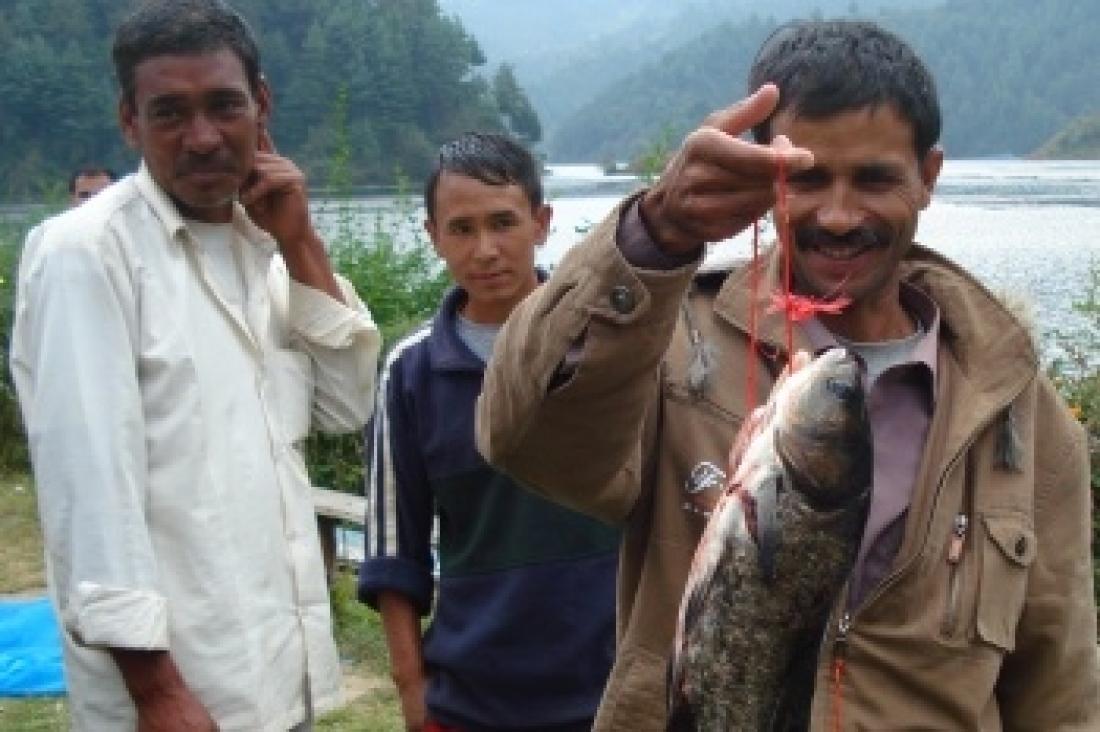Fish cage culture in Nepal
Researchers supported by IDRC guided the first families into this new venture when the construction of a hydro dam flooded the area in 1982.
For most of the 2,000 people who had to abandon their homes, fish farming turned misfortune into opportunity.
Researchers at the Nepal Agricultural Research Council found that the water was ideal for raising fish — mostly carp species — in large floating cages. The fish thrive on plankton readily available in the water.
The majority of the displaced families soon adopted fish farming as their new livelihood and prospered on the shores of the reservoir. There is also a smaller but equally successful catch fishery, boosted in part by “escapees” from the fish cages.
With new-found financial security, more families are able to provide education for their children, unlike many rural communities in Nepal. And the role of women in decision-making has been strengthened. Women take part alongside the men in all activities, from cleaning and repairing the fish cages to participating in meetings of farmers’' associations, attending workshops, and marketing the catch.
Tek Gurung, Director of Livestock and Fisheries Research, Nepal Agricultural Research Council, said “There are some 1,100 to 1,200 fish cages and average production is estimated at 120 to 130 metric tonnes per year.”



